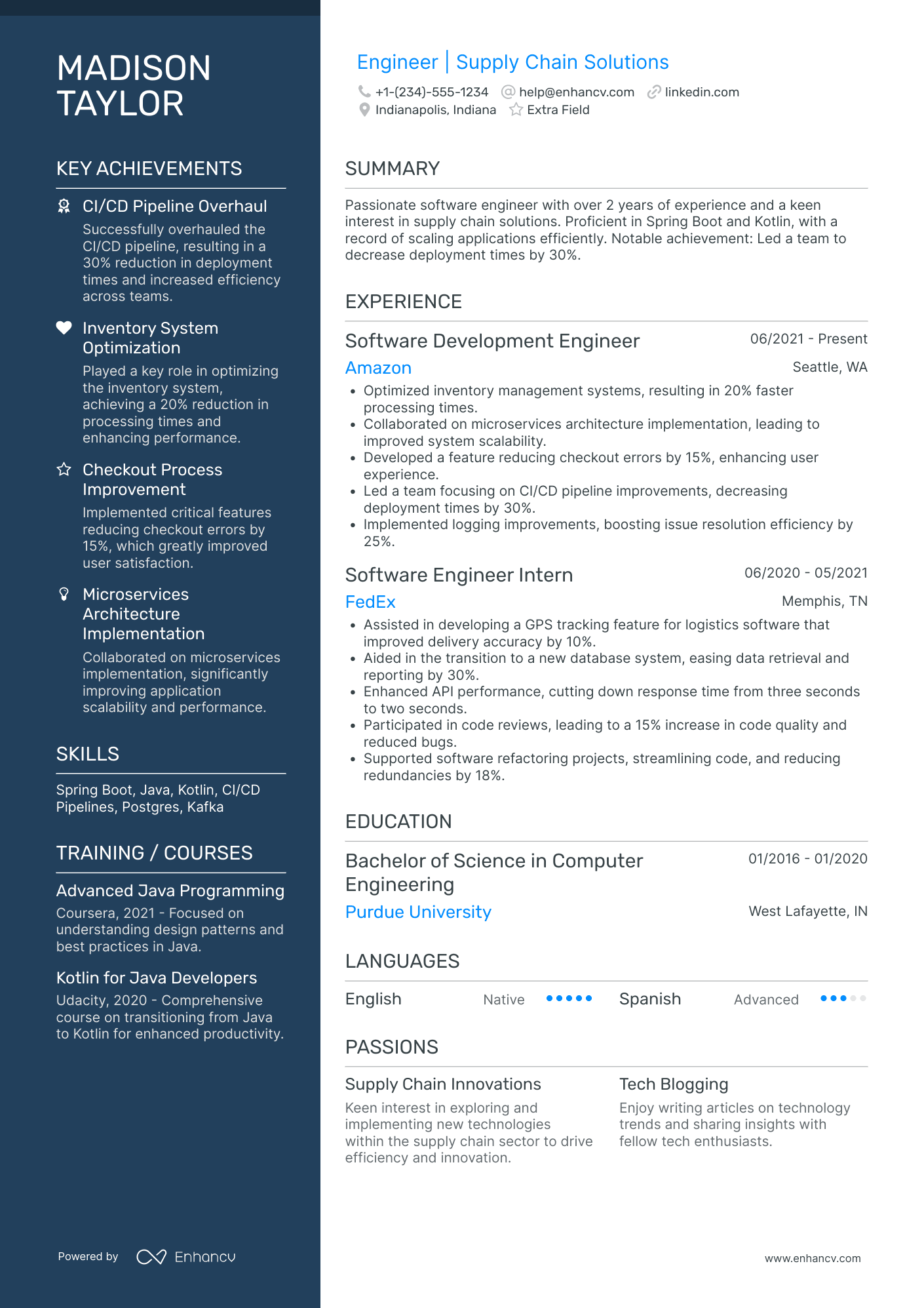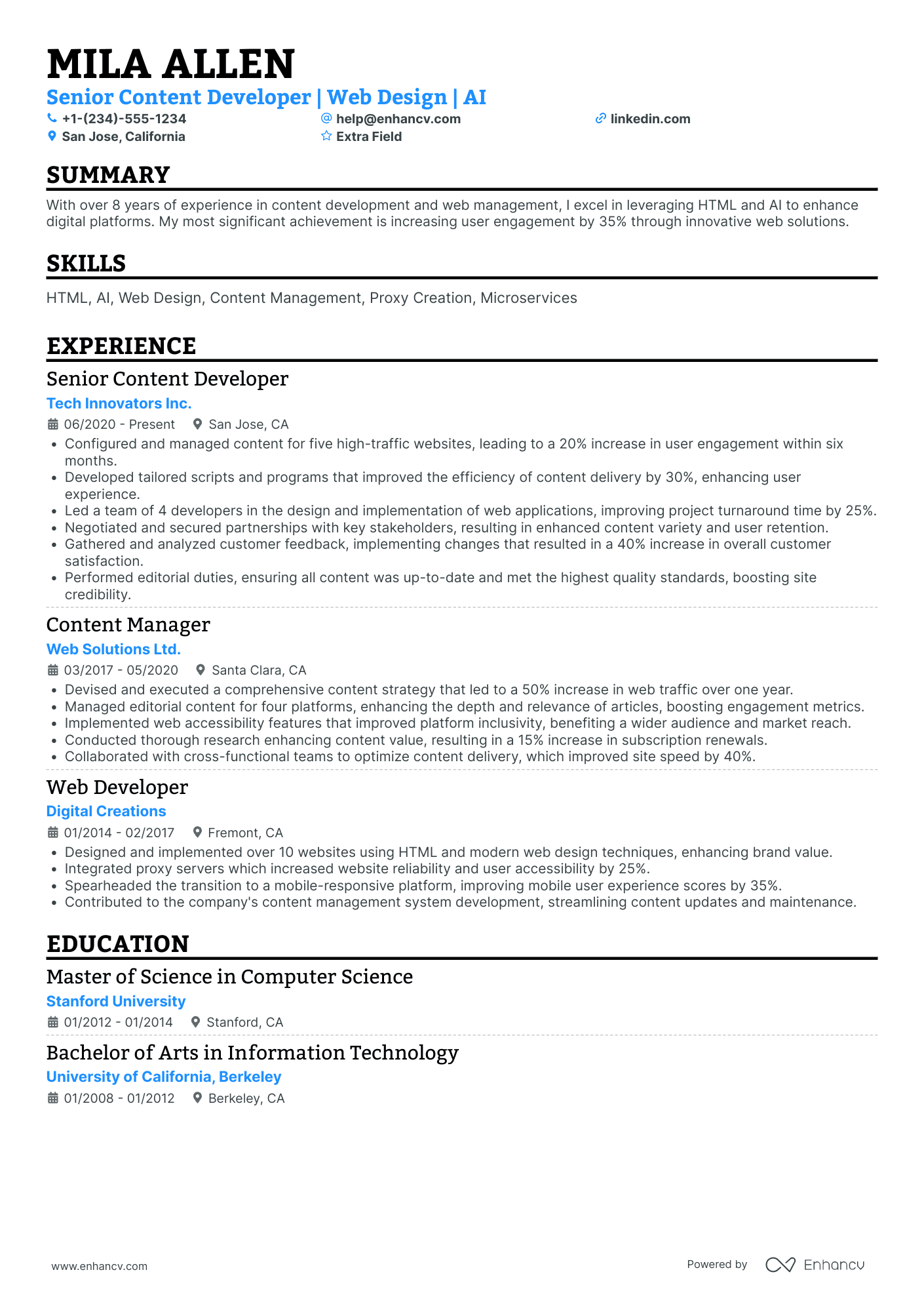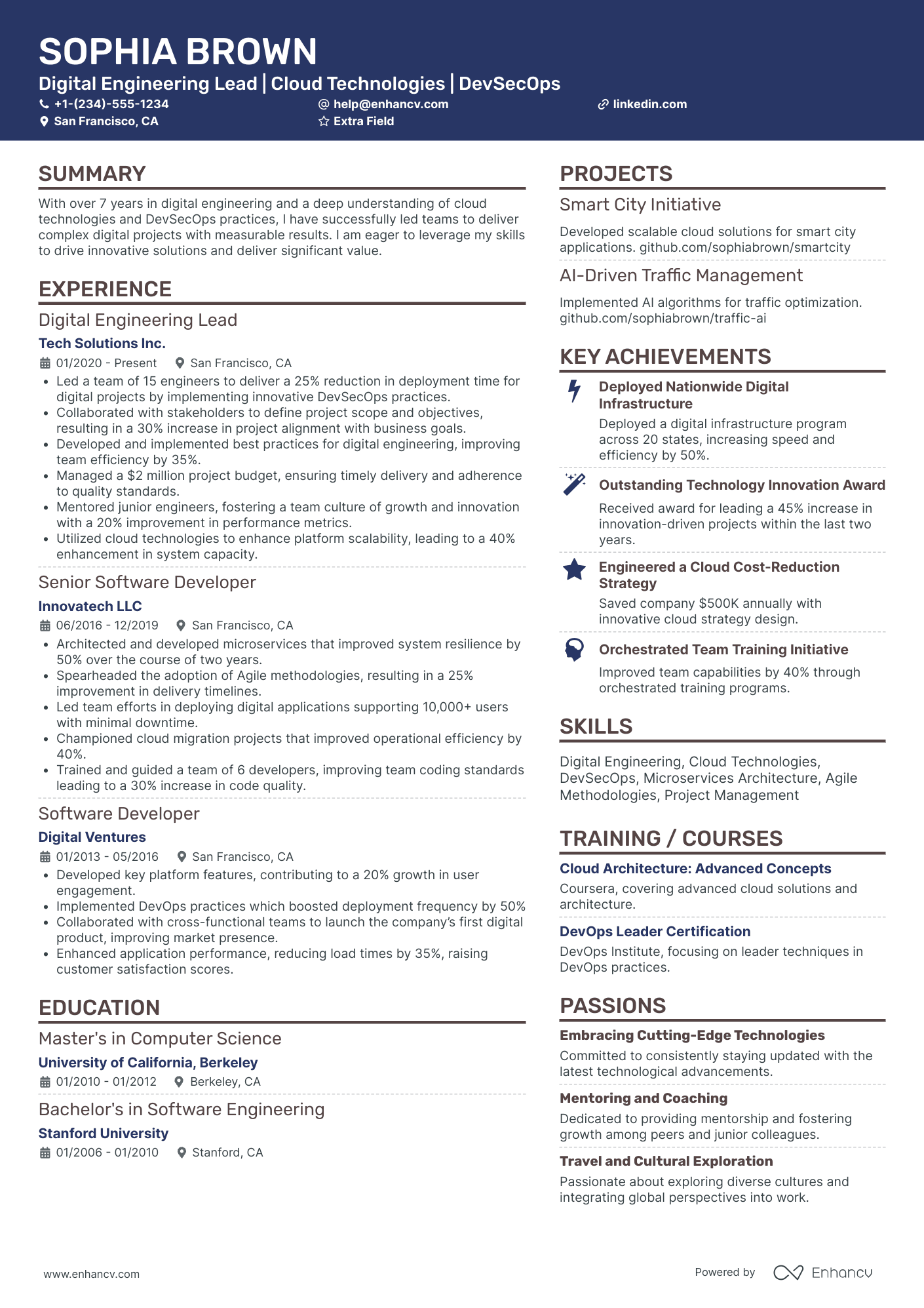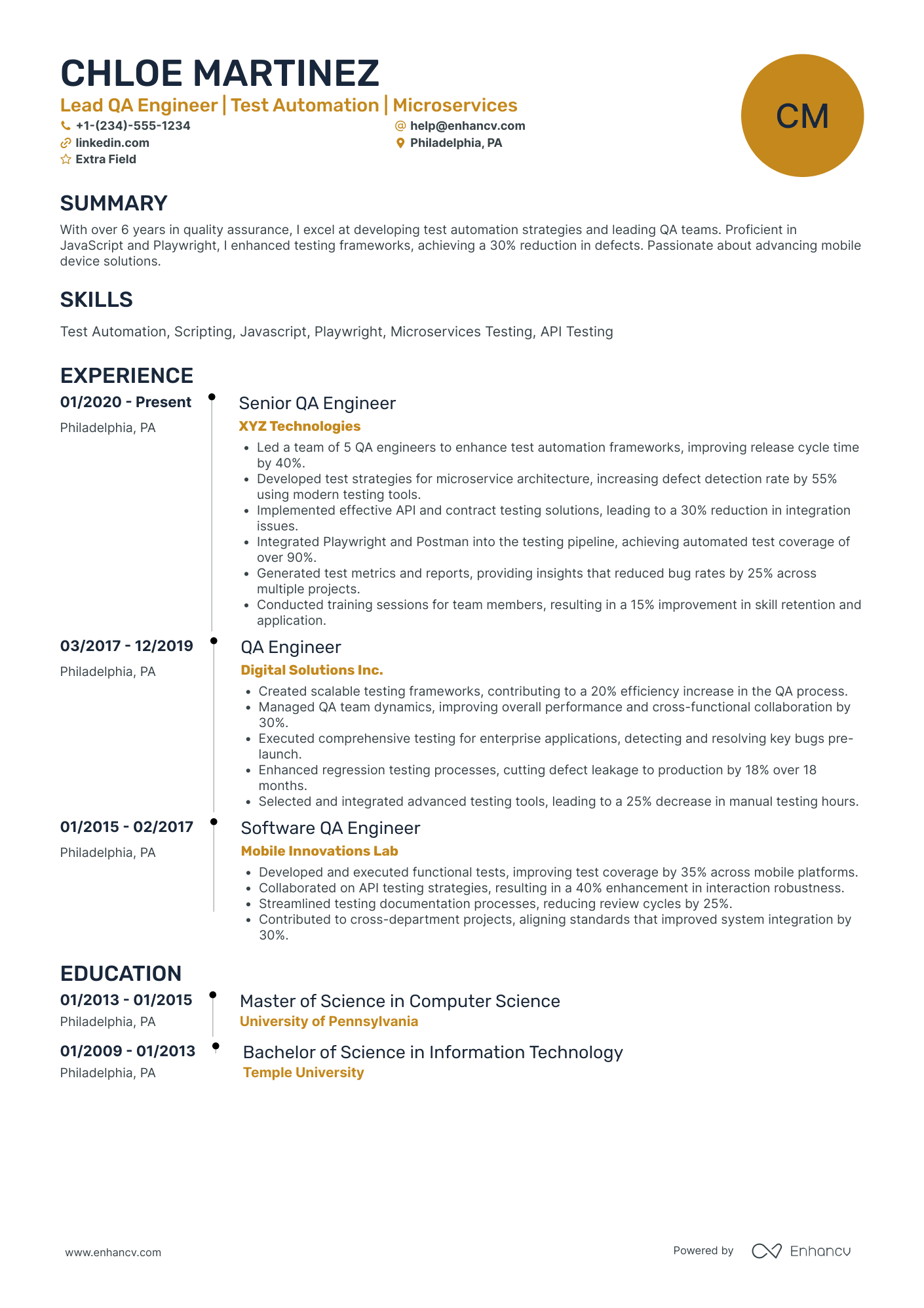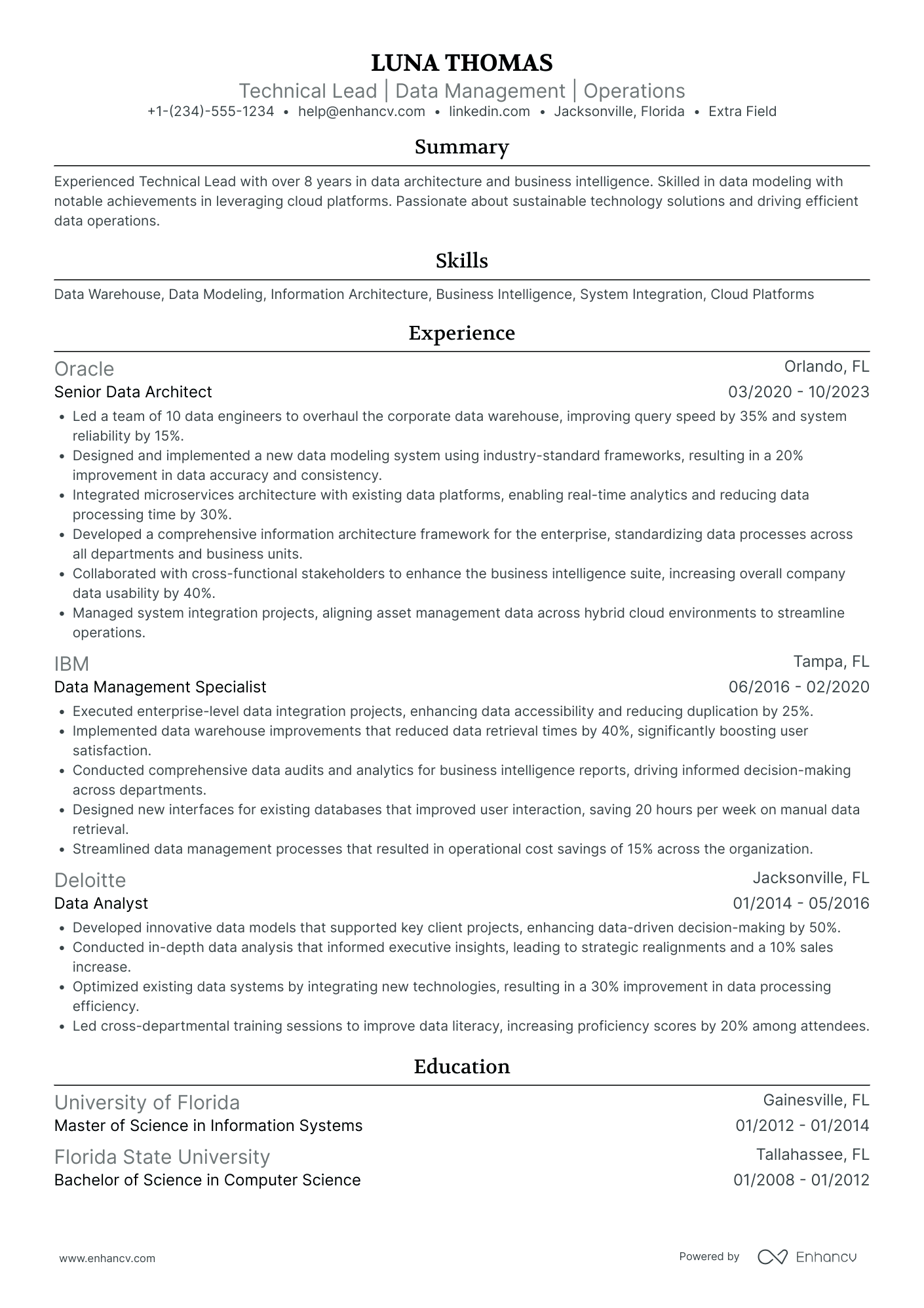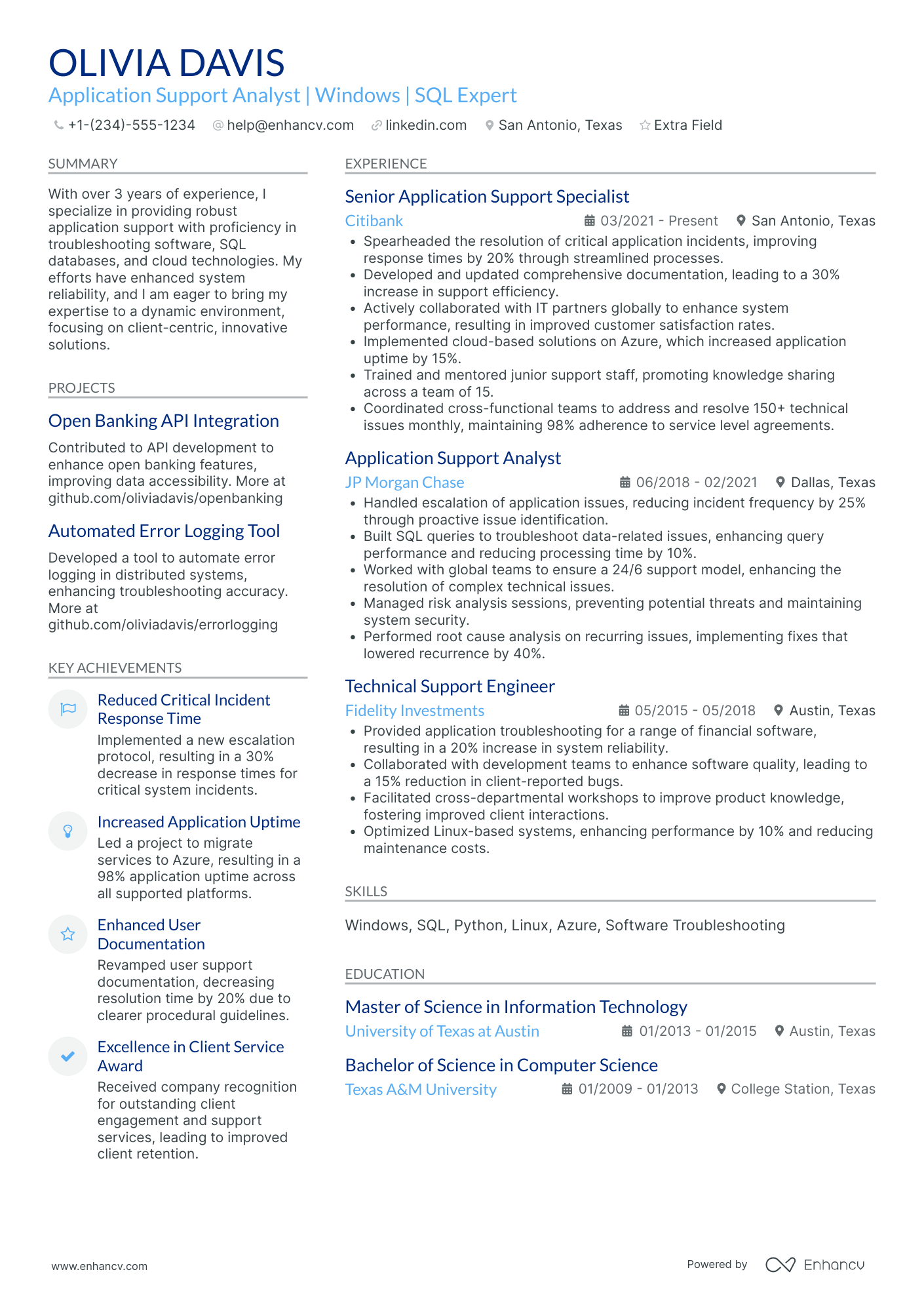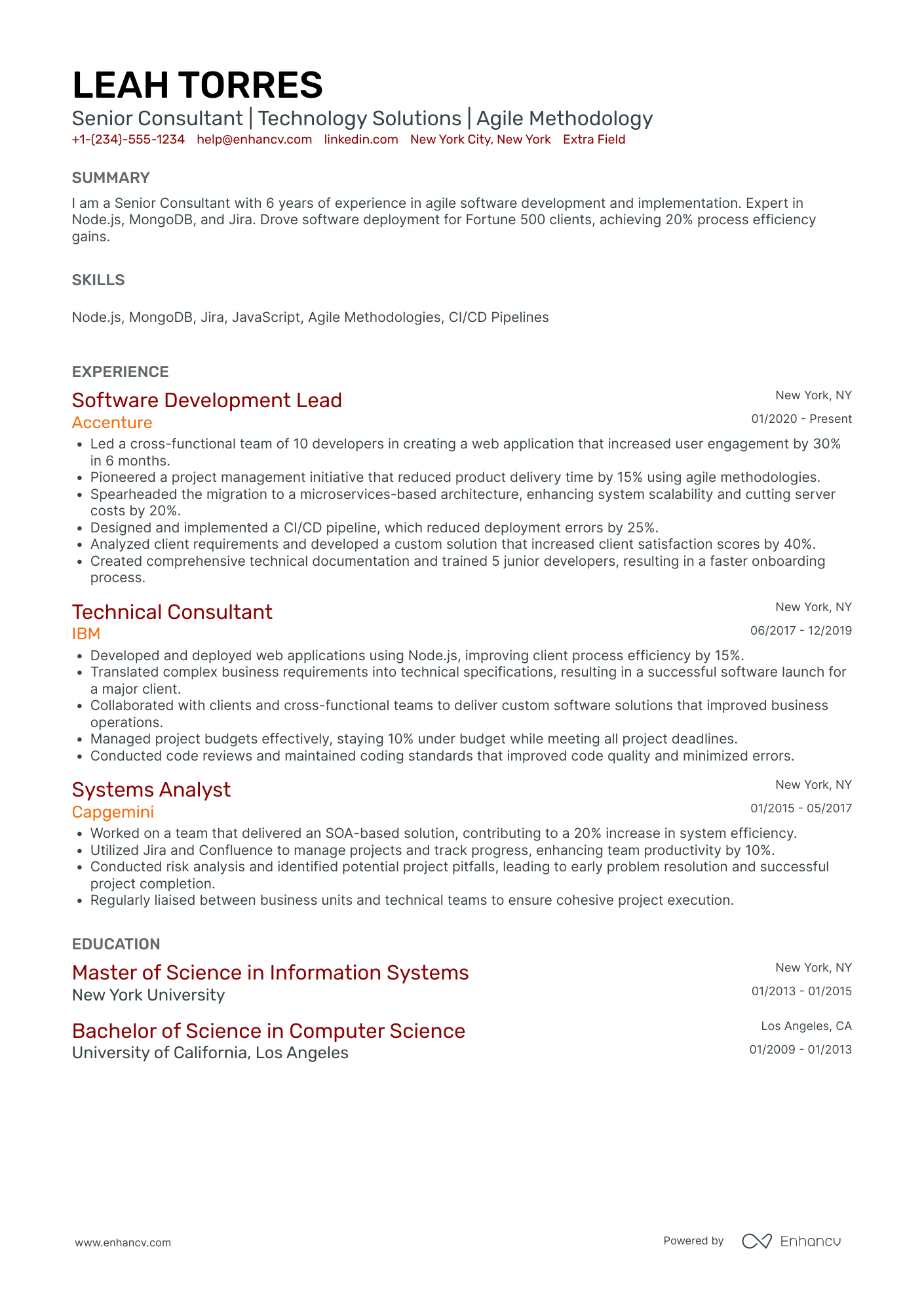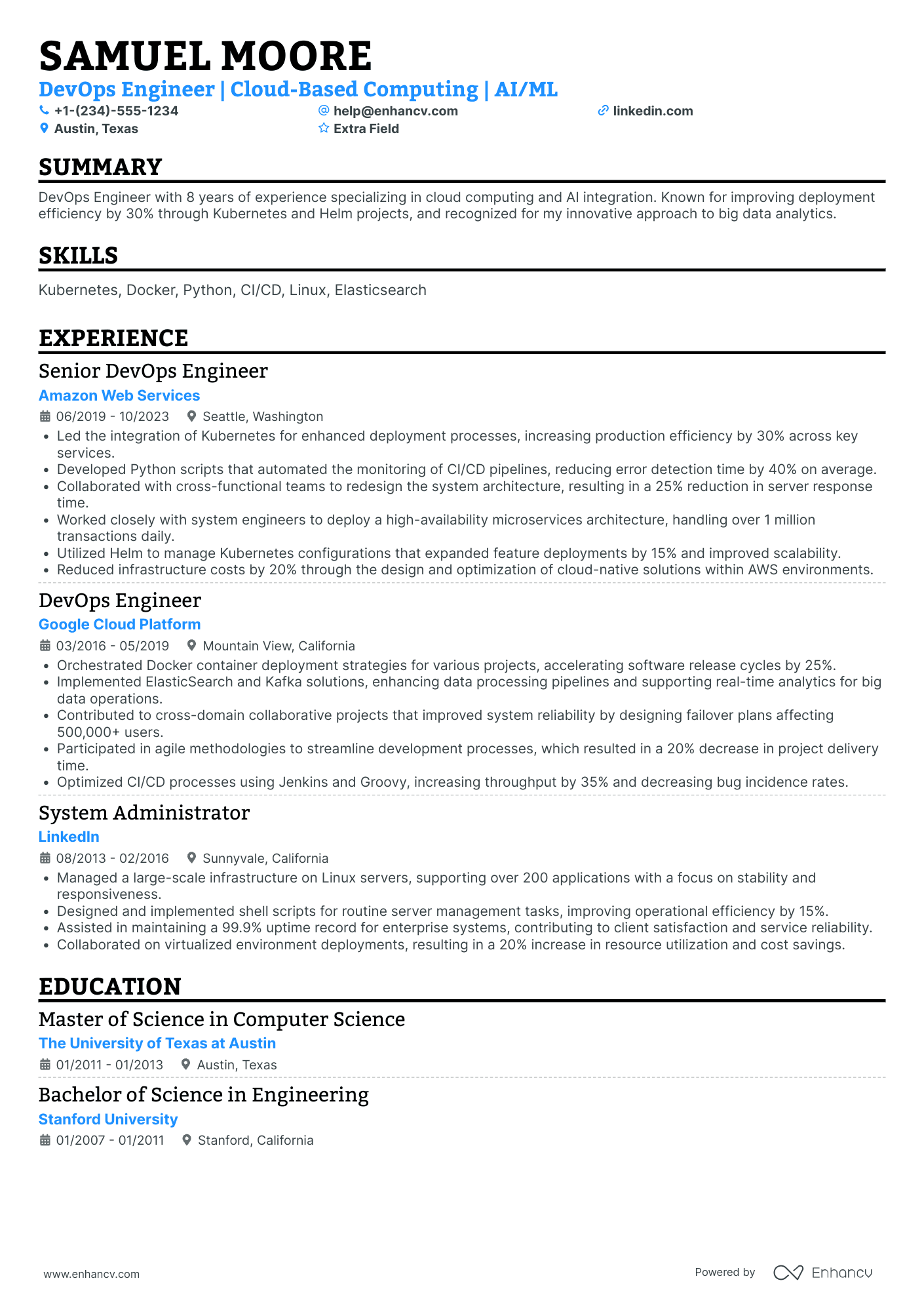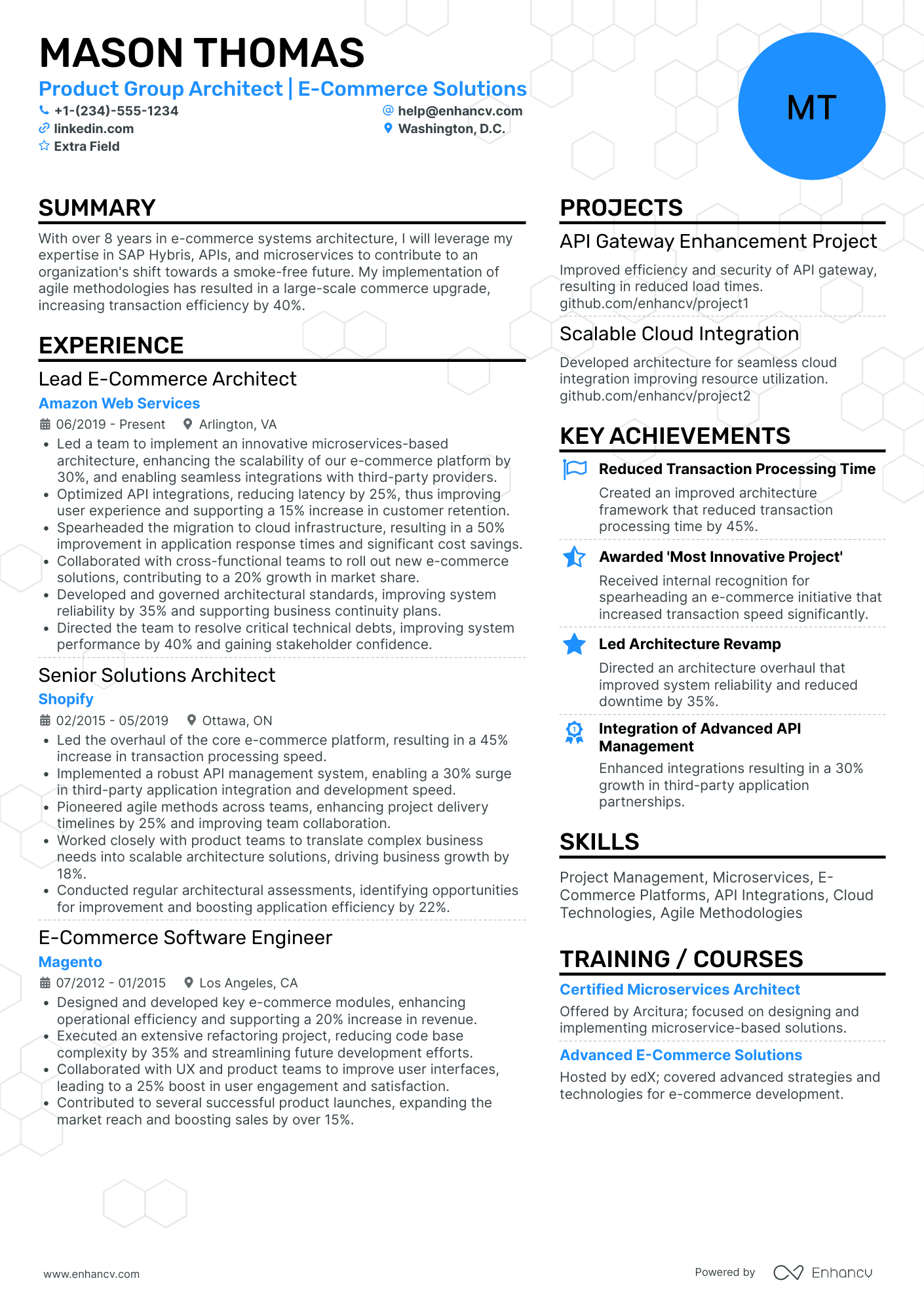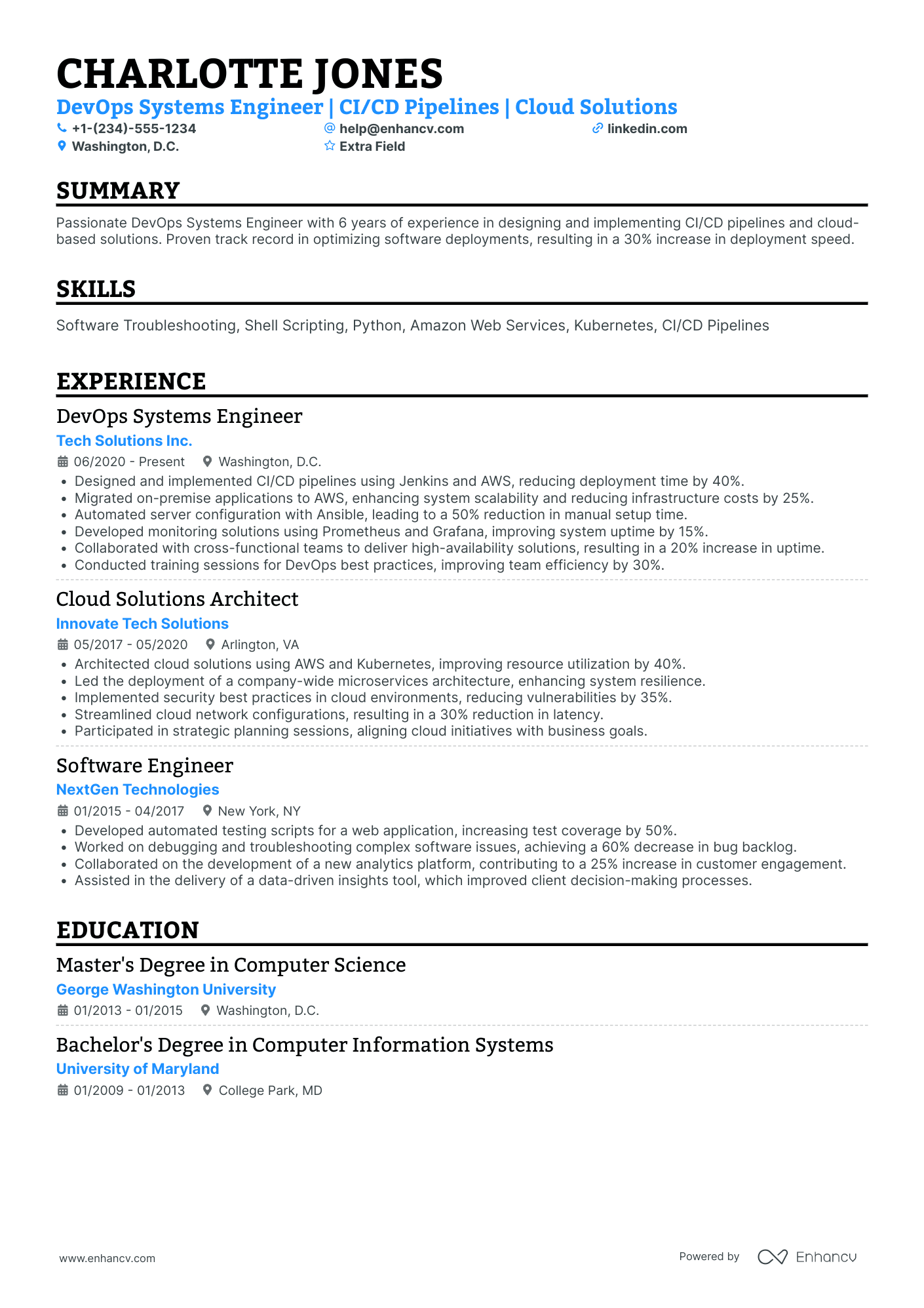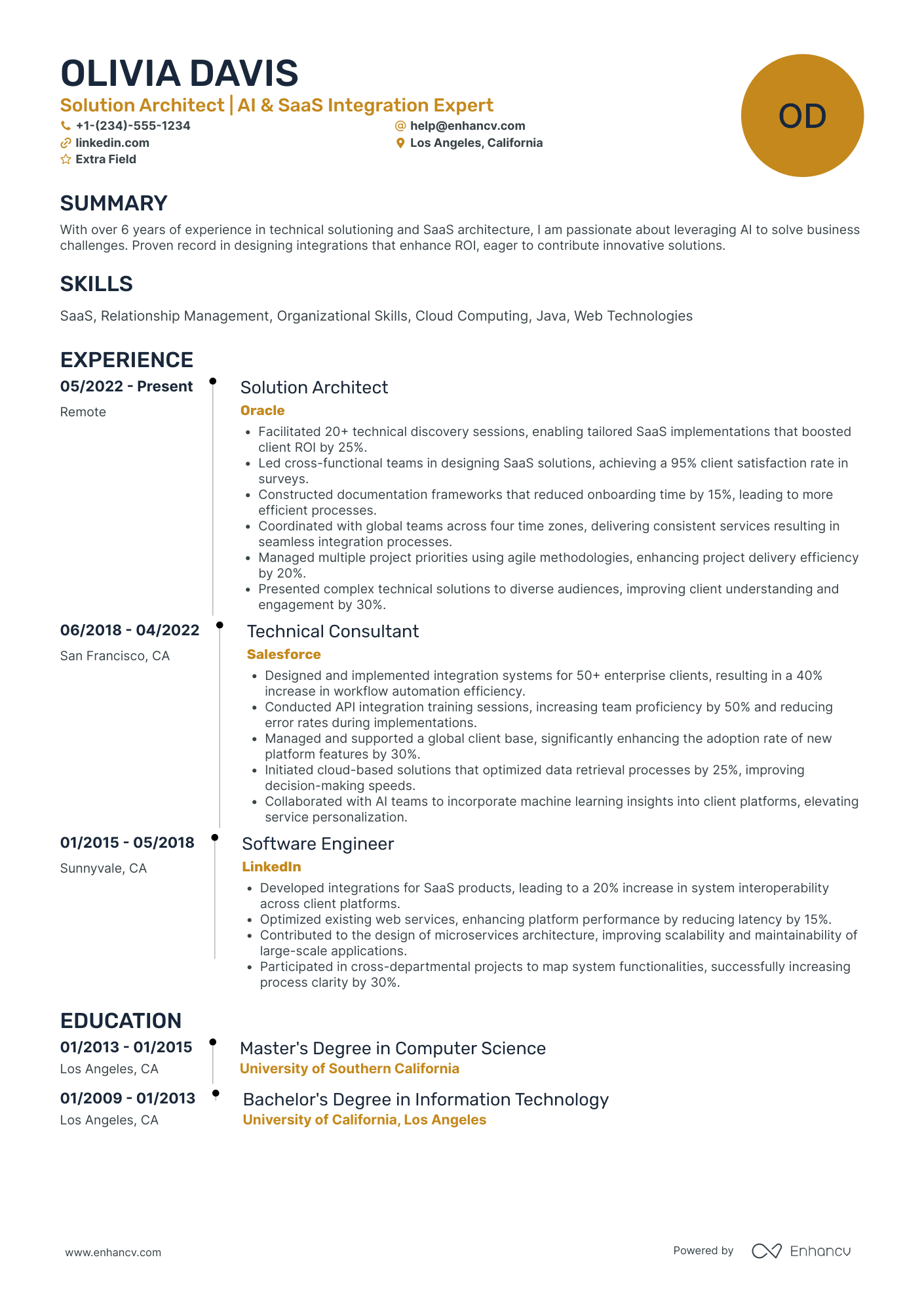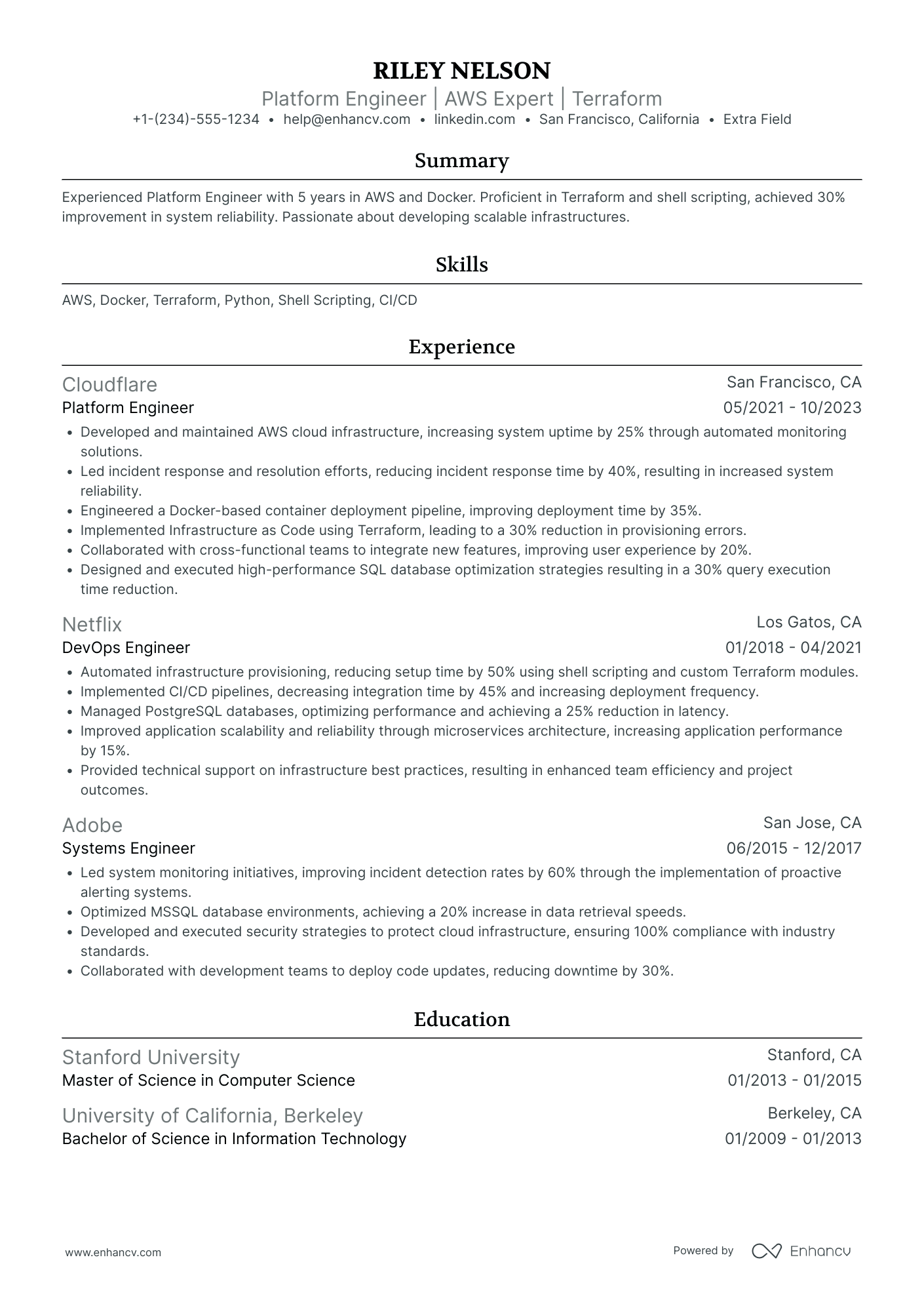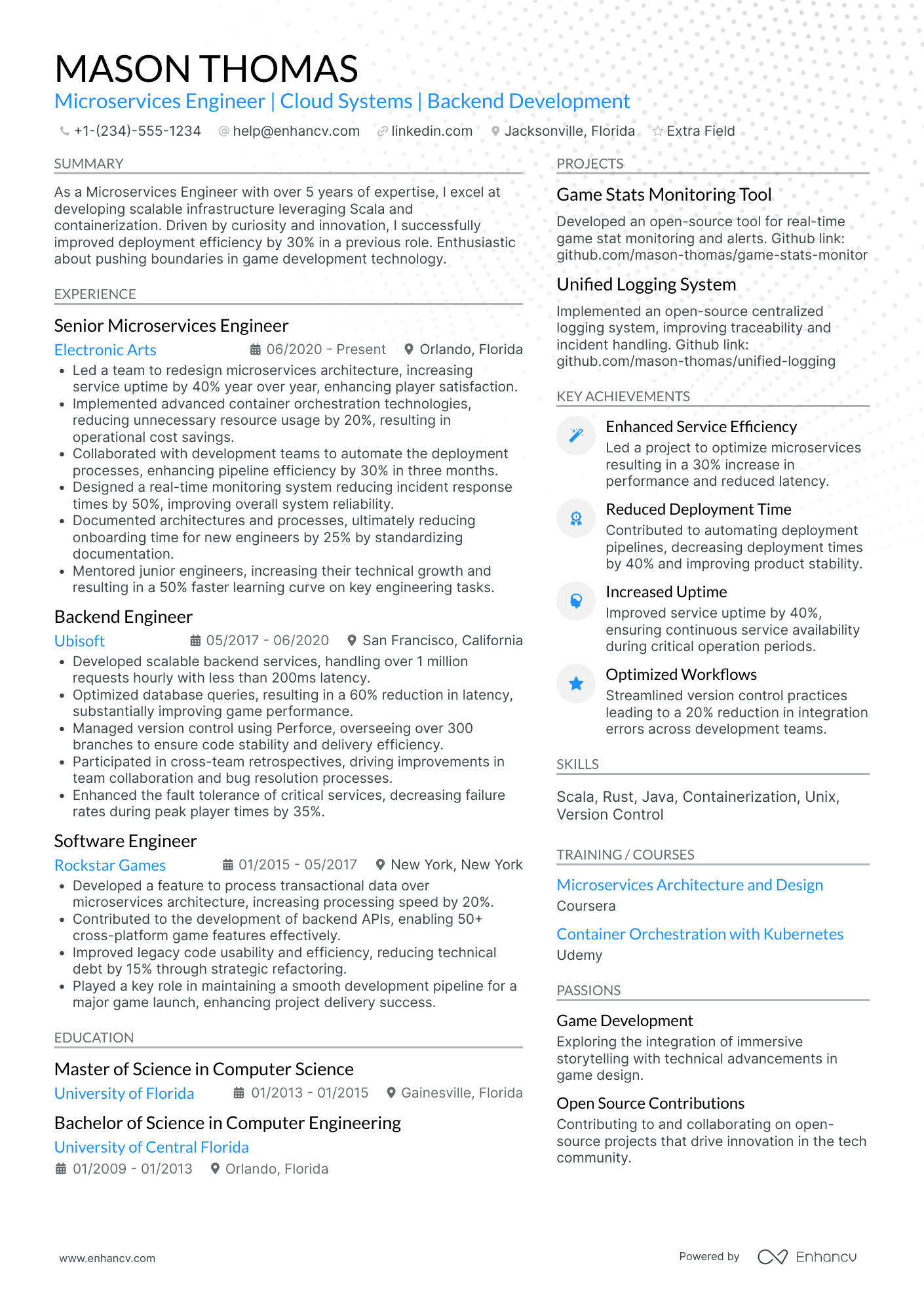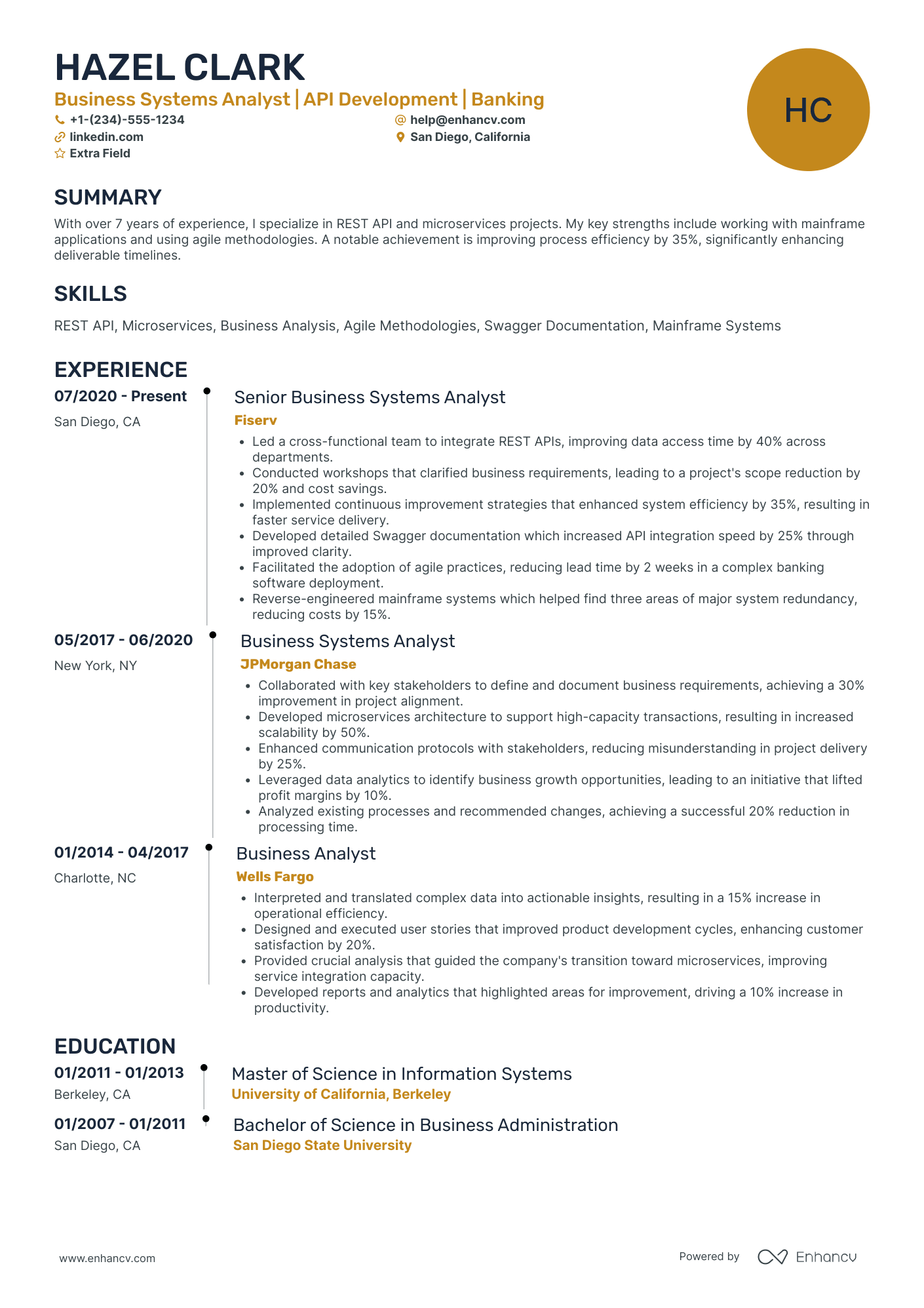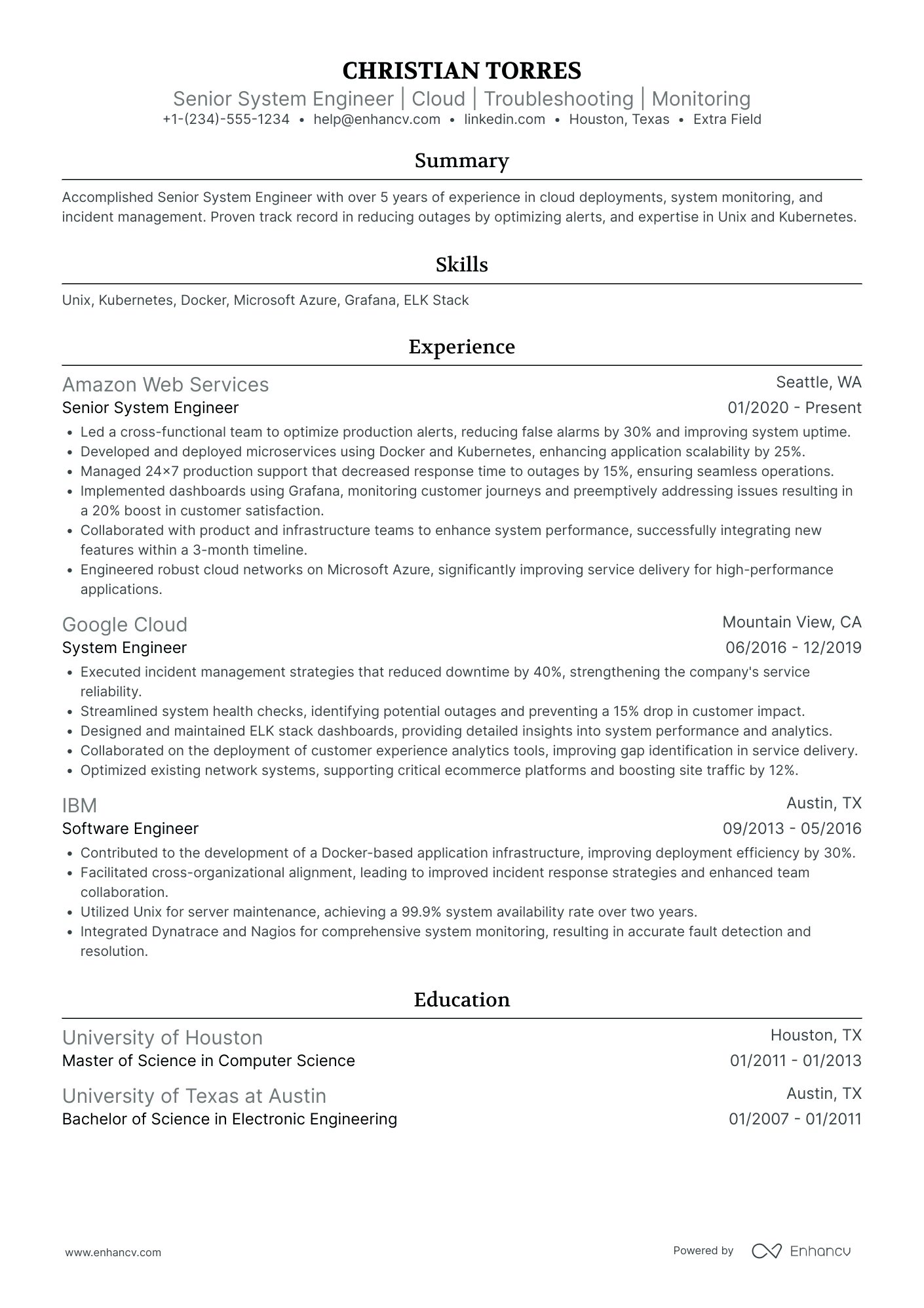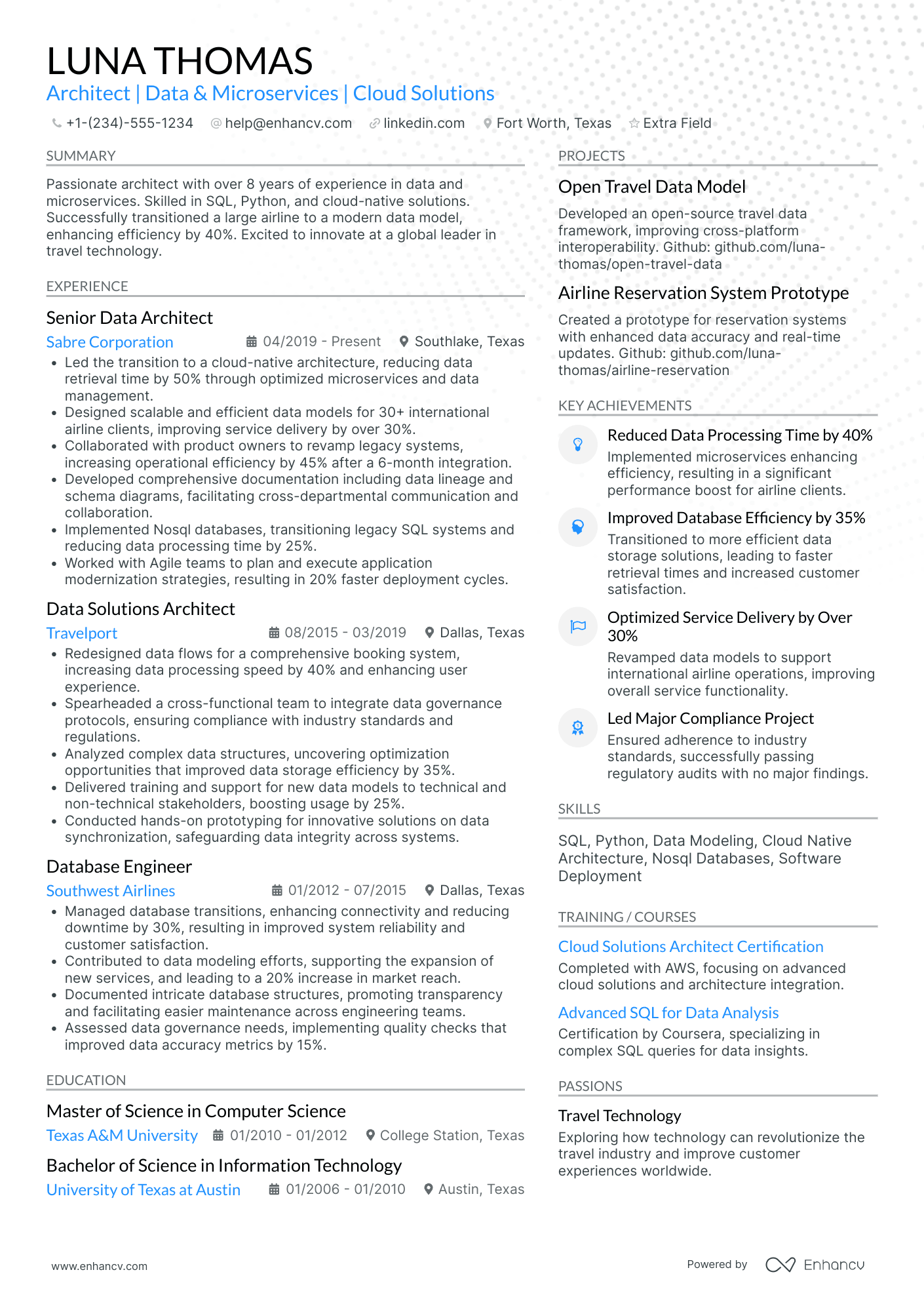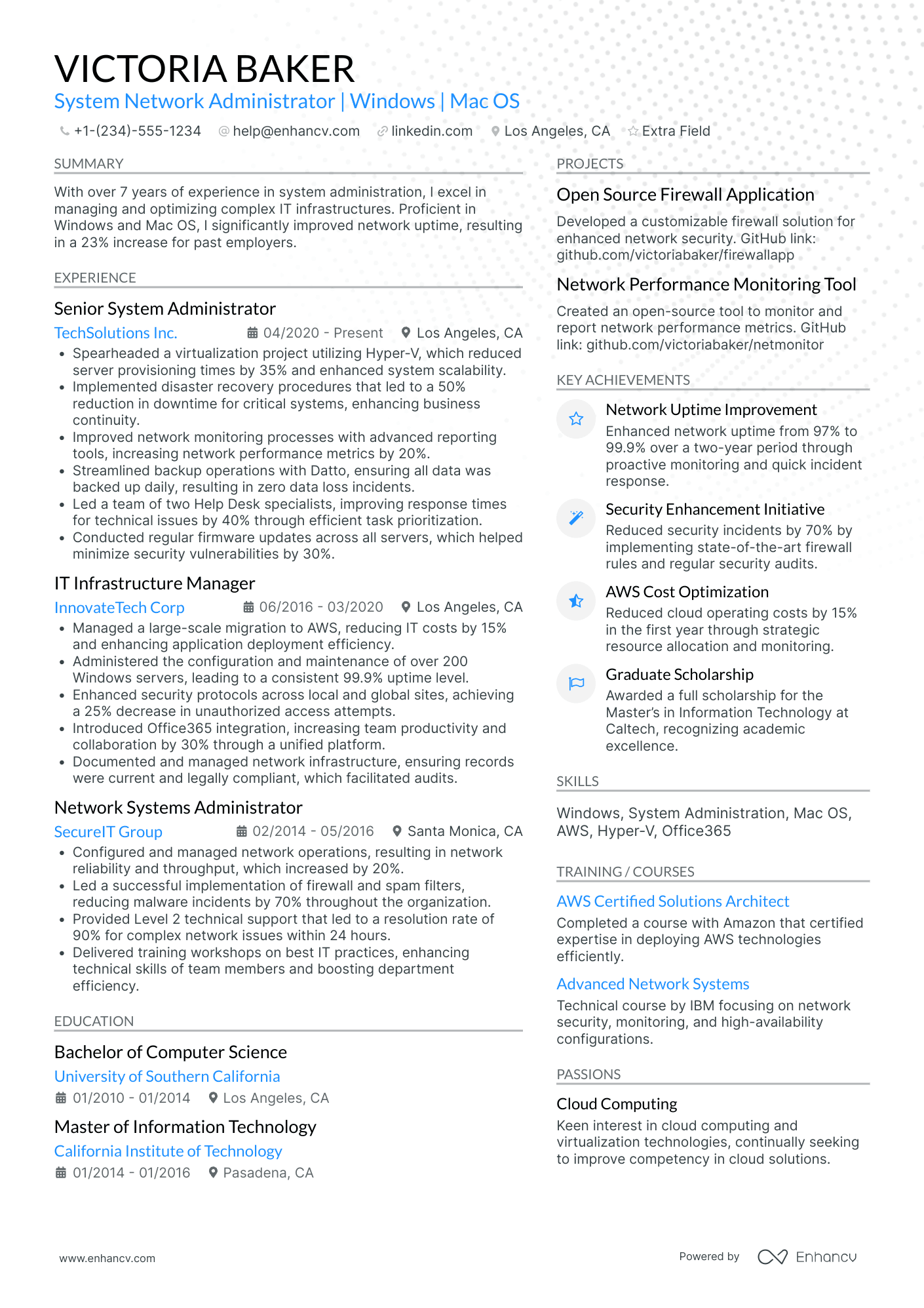Microservices are tricky.
A few years back it was a trendy word every developer or architect was eager to feature on their resumes. Simply put, it worked like a magnet for technical recruiters.
These days, microservices is an overused word with potential to completely sabotage your job search.
Inserting “microservices” into every section of your resume won’t guarantee you an interview anymore.
Recruiters now need more than that. They need to know exactly what kind of experience you had with microservices, if you were successful and if you’re useful to the particular company.
Luckily, we got your back.
In this guide you’ll see:
- Real resume examples from microservices developers who got hired
- What recruiters are looking for in microservices resumes
- What are the best resume sections to emphasize your knowledge of microservices
- Points and keywords that will make your Microservice resume the most convincing on the job market
Looking for related resumes?
- Software Engineer resume examples
- Java Developer resume examples
- Javascript Developer resume examples
- Angular Developer resume examples
- Solutions Architect resume examples
- Enterprise Architect resume examples
Where should you put microservices on resume
Here are some microservices resume points to consider:
- Don’t ride the Microservice hype wave. Mention it only in the context of your projects and achievements
- Focus on how microservices were useful to the particular environment you worked in and how they benefited the organization
- Focus on microservices’ strong points and how you were able to utilize those (scalability, continuous integration, modularity, etc.).
Most impactful sections on microservices resumes
The most impactful sections on microservices resumes for most job positions are “Experience” and “Summary” sections.
The real question, however, is where should you put microservices to make your overall resume look coherent and relevant.
That really depends on the position you’re applying for.
Developer and Enterprise Architect positions both require deep knowledge of microservices, although their experience and summary sections should look completely different.
Product Designers and Product Researchers sometimes are also required to understand microservices, however the most suitable place to mention that would be in the “Skills” section.
For certain positions, the impact starts right from the header.
What makes a great microservices resume header
According to recent statistics, 63% of businesses are adopting microservices architectures. Even though heavily criticised for its “hype”, the technology is still considered new and hot.
Some companies are so eager to find a person with Microservice experience they even put “Microservice” in the job title.
It looks like this: “Software Engineer - AWS/microservices”, or “microservices-Developer”, or “microservices Architect”. You can totally play on that.
2 microservices resume header examples
Instead of using your ordinary job title, tweak it to include microservices.
However, be advised: this only works if microservices are an integral part of the job, like if you’re developing for microservice environments or offer microservice solutions for company’s clients.
Sometimes working with microservices is only a part of the job.
For example, the word “microservices” was put in the title by a recruiter who overemphasized its magnitude. You’ll get that vibe by reading the job description.
It happens most often with IT management positions. Don’t fall prey to that.
In this case, a header title tweak will make you look too needy or incoherent, which can ruin the first impression.
If you still think that microservices are an important, but not central part of the job description, mention your experience with it in your resume summary.
What’s probably missing in your microservices resume summary
A summary is a perfect place for you to emphasize your knowledge of microservices and leave a good first impression.
However, Software Developer and Enterprise Architect positions will mention microservices in a completely different manner.
For a microservices developer resume, technologies and implementation are the priority. For Architects - strategy and bigger picture.
There are two mistakes developers make when writing a resume summary.
Optimize your resume summary and objective for ATS
Drop your resume here or choose a file.
PDF & DOCX only. Max 2MB file size.
Mistake #1: Developers tend to list all the technologies they’ve been working with in the past
The resume Summary section simply won’t have enough space to list all you skills. That’s what your Skills section is for.
Also, by mindlessly listing all the tech you’ve been working with you risk running into Mistake #2.
Mistake #2: Irrelevant technologies in the summary
microservices architecture can grow pretty complex.
You can reach a stage in which recruiters must look for developers with special set of skills.
So, don't list a bunch of technologies that have nothing in common with the job ad.
Don’t forget to add a few adjacent skills not to look like you’re copy and pasting.
Here's an example summary for someone with Angular proficiency.
For IT managers, however, mentioning microservices in their summary is a different task.
If you focus too much on microservices, chances are you may come off as a niche specialist rather than a strategic leader.
Your best option is to organically reference this software development technique in the bigger narrative of how you helped the business.
Below is an example of a summary for a microservices Architect resume.
For a microservices Java resume summary, follow the same rules. Don’t just list all the technologies you’ve worked with.
Instead, show the environment in which you utilized microservices. Here’s a Java microservices sample resume summary.
What should your microservices resume experience feature?
A common mistake people make in their microservices resume Experience section is putting all their eggs into one basket.
Microservices is not a silver bullet, so you don’t want your resume to be exclusively about it.
Then, you won’t adequately explain the other things you are capable of.
- •Designed and developed asynchronous RESTful Microservices using Spring boot, Couchbase and RXJava
- •Developed cloud based application using event driven and Microservices architecture
- •Transformed the existing application into a suite of cloud-hosted Microservices, optimizing the platform
Instead, present yourself as a well-rounded developer who understands microservices strengths.
Below are some important microservices resume points:
Developers should mention how they used microservices to improve app scalability, modularity or CI/CD.
Microservices is not an isolated technology. It often goes hand-in-hand with container orchestration tools, REST API and agile development.
Create a context so your resume doesn’t look like someone who put the word “microservices” there only to attract more attention.
- •Developed new libraries with Micro Services architecture using Rest APIs, spring boot and pivotal cloud foundry
- •Transformed legacy application into a suite of cloud-hosted Microservices using Spring Boot, and laid the groundwork for x10 traffic scale
- •Worked in agile framework, collaborating with business and research teams in story grooming, reviewing story/acceptance criteria and performance metrics
The Experience section is a developer’s opportunity to showcase all the technologies and environments they’ve been working in, and their respective achievements.
Don’t forget to focus on those tools and operations most demanded for the position in question.
Those can be certain tools employers emphasize (e.g. Kubernetes, AWS) or processes (collaboration, migration, CI/CD).
Make sure to emphasize those in your Experience section if the description features them.
When you’re applying for managerial work that requires microservices experience, such as Solutions or Enterprise Architect, focus on global tasks that microservices solve.
Some companies are after API-fication. Others want to migrate their monolithic architectures into Microservice architectures.
Here's how it may look on job descriptions:
“Deep expertise in API-fication of legacy platform and microservices implementation”.
Or:
“Experience in creating architecture diagrams, data models, API specs, Microservice definitions, and high-level solution designs”.
Look for these requirements and frame your experience accordingly.
Let's read this microservices sample resume.
- •Evaluated targeted technologies for business, economic and technical applicability to multi-cloud architectures that the company successfully adopted for SoA & modularity
- •Oversaw migration of existing application into Microservices Architecture using Rest APIs, spring boot, Spring Cloud and AWS
- •Designed solutions with ability to hot deploy releases/patches and maximizes on cloud PaaS features to enable full system availability
Now that you have successfully demonstrated your experience with microservices, it’s time to see what skills you should put in the Skills section of your resume.
What microservices skills do companies search for?
As mentioned before, microservices is not an isolated technology. It works with a wide range of tools and platforms, and there are no two identical microservice environments.
Although you should list as many technical skills as possible, prioritize those that are the most relevant to the position you’re applying for.
For example, for a microservices Java Developer resume, apart from Java you should mention Spring Cloud, J2EE, and Spring Boot technologies.
Here’s the list of skills that you will most often need for Microservice positions.
Top microservices skills for resume
- Microservice architecture (Spring Cloud, Eureka, Zookeeper, Zuul, or similar)
- Containers Orchestration (Kubernetes, Docker Swarm, Azure CS etc.)
- Java
- AWS
- Open Source Frameworks (Spring Boot, Spring Cloud, Hibernate, etc.)
- REST, SOAP
- DevOps, Agile (SCRUM)
- CI/CD
- SQL, noSQL
- Node.js, PHP
- Jenkins
- J2EE (Hibernate, Struts, AJAX, JDBC)
- Version control Systems (SVN, GitLab, Bitbucket, etc.)
- Visual Studio
How to show my microservices related certificates on resume?
Microservices is a relatively new technology, so there are not many specialized and widely accepted certifications available yet.
You have two options here.
Option #1: enroll in specific courses available on Coursera and Lynda. Those grant certificates at the end, just keep in mind that those certificates won’t replace real experience with microservices.
Option #2: get certified in adjacent technologies.
Although microservices are new, most technologies that are used with them are not.
Those include: AWS (and other cloud solutions), Kubernetes, Java.
Examples:
- Certified Kubernetes Administrator (CKA) Program
- Certified Kubernetes Application Developer (CKAD) Program
- Java SE 8 Programmer Certification
- AWS Certified Solutions Architect
If you obtain certificates in those fields and that will definitely strengthen your overall Microservice profile.
Pro tip
Make sure to apply only for those certifications that are useful to your career path. Don’t waste your time on everything there is.
The most effective advice for a microservices resume?
- Don’t make your resume exclusively about microservices. They might be the right tool for the job, but not the solution for everything.
- Always put your Microservice experience in the context of other tools and processes. Don’t throw the word “microservices” around for the sake of it.
- Microservices can be a part of the job or the job, make sure that your resume reflects it proportionally.
- Use keywords that reflect key advantages of the Microservice Architecture: scalability, modularity, continuous delivery & integration, independent deployment, etc.
- Don’t overflood your resume with irrelevant skills. Prioritize those that a particular job description emphasises.
Microservices resume examples
By Experience
By Role
